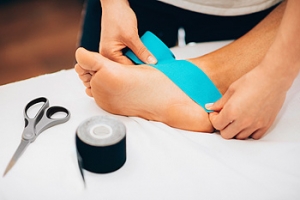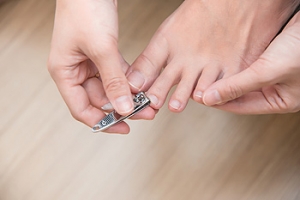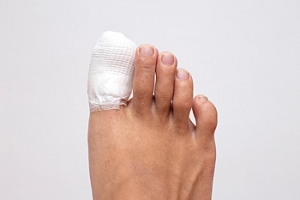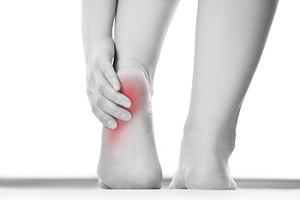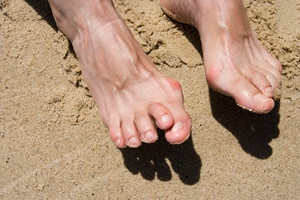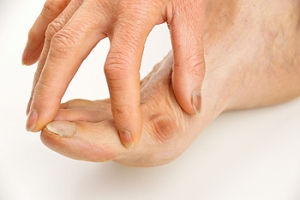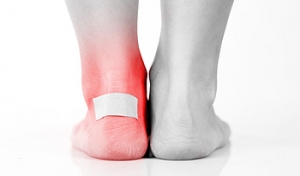Connect With Us
Featured Articles
Super User
Your Walking Shoes Should Be Different Than Your Running Ones
 You use your feet differently when you walk than you do when you run. When you walk, your feet do not experience too much impact. Conversely, when you run, you feel almost three times more impact in your feet. Therefore, having different shoes for the different types of exercise is vital to the overall health of your feet and legs. There are four factors to remember while buying shoes. First, a running shoe should have a more flexible sole than a walking shoe. Next, the heel of a running shoe should be slightly elevated, while the heel of a walking shoe should be flat. A running shoe should additionally give you less motion control than a walking shoe, as your foot moves more while running. Finally, a running shoe should be lighter than a walking shoe, so you can move quickly. If you have any questions about what shoe to use, be sure to contact a podiatrist.
You use your feet differently when you walk than you do when you run. When you walk, your feet do not experience too much impact. Conversely, when you run, you feel almost three times more impact in your feet. Therefore, having different shoes for the different types of exercise is vital to the overall health of your feet and legs. There are four factors to remember while buying shoes. First, a running shoe should have a more flexible sole than a walking shoe. Next, the heel of a running shoe should be slightly elevated, while the heel of a walking shoe should be flat. A running shoe should additionally give you less motion control than a walking shoe, as your foot moves more while running. Finally, a running shoe should be lighter than a walking shoe, so you can move quickly. If you have any questions about what shoe to use, be sure to contact a podiatrist.
For more information about walking shoes versus running shoes, consult with Dr. Howard Horowitz from Bowie Foot & Ankle . Our doctor can measure your feet to determine what your needs are and help you find an appropriate pair of footwear.
Foot Health: The Differences between Walking & Running Shoes
There are great ways to stay in shape: running and walking are two great exercises to a healthy lifestyle. It is important to know that running shoes and walking shoes are not interchangeable. There is a key difference on how the feet hit the ground when someone is running or walking. This is why one should be aware that a shoe is designed differently for each activity.
You may be asking yourself what the real differences are between walking and running shoes and the answers may shock you.
Differences
Walking doesn’t involve as much stress or impact on the feet as running does. However, this doesn’t mean that you should be any less prepared. When you’re walking, you land on your heels and have your foot roll forward. This rolling motion requires additional support to the feet.
Flexibility – Walking shoes are designed to have soft, flexible soles. This allows the walker to push off easily with each step.
If you have any questions, please feel free to contact our office located in Bowie, MD . We offer the newest diagnostic and treatment technologies for all your foot care needs.
Differences between Walking and Running Shoes
Both running and walking are great exercises, but should a person wear the same shoes for both activities? The answer is no, because there is a difference between the way a person’s feet hit the ground when they are walking and when they are running. Therefore, the shoes for each activity are designed differently. Before you begin any exercise program it is always recommended that you speak with your doctor or podiatrist.
Walking is a low impact exercise that is often recommended by doctors to their patients. While walking is a simple activity, it still requires some degree of preparation. If you think about walking and how your feet strike the ground as you move, you will notice that your heel hits the ground first before your foot continues to roll forward and your next step begins. Because of this rolling motion, walking shoes are designed to be more flexible than running shoes. This flexibility helps the walker push off with each step taken.
Because the heel hits the ground first when you walk, walking shoes are designed to absorb most of the shock. Walking shoes should therefore have a beveled or angled heel. The angle of the heel helps absorb the shock and reduces pressure from the ankles. This is especially important for speed walkers, as their feet will hit the ground twice as often as the normal walker.
When people decide to run as a hobby or for their health, they must first realize that running is a high impact exercise. If not done with the proper equipment, running may cause damage to the feet and legs. Running shoes are designed to be more lightweight and to have thicker soles. The thicker soles act as shock absorbers for the rest of the body. Walking shoes often do not have the proper arch support that running shoes do.
A proper fitting shoe can make or break a runner or a walker. If the shoes are too big, their feet will slide back and forth inside the shoe and cause blisters. Whether you will be running or walking, the right equipment can make all of the difference in the world.
How to Treat Wounds on the Feet
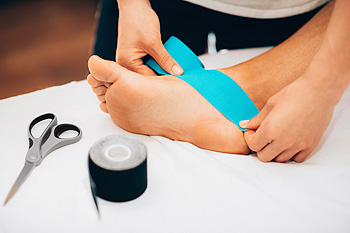 The feet are susceptible to cuts that may penetrate the skin. Minor wounds can be treated with bandages or skin glue, and the healing process will accelerate if the cuts are kept covered and dry. If you have stepped on glass or rocks, an X-ray may be necessary to ensure there is no debris left in the foot. For serious wounds, it is beneficial to keep weight off of the foot as much as possible, as this can help in giving the foot a chance to heal. If the wound is bleeding, it is helpful to apply direct pressure. If this fails to work, it is wise to seek medical attention. Additionally, an infection may be present which is often accompanied by a fever. For wounds on the feet, it is suggested to seek the counsel of a podiatrist who can guide you towards proper treatment.
The feet are susceptible to cuts that may penetrate the skin. Minor wounds can be treated with bandages or skin glue, and the healing process will accelerate if the cuts are kept covered and dry. If you have stepped on glass or rocks, an X-ray may be necessary to ensure there is no debris left in the foot. For serious wounds, it is beneficial to keep weight off of the foot as much as possible, as this can help in giving the foot a chance to heal. If the wound is bleeding, it is helpful to apply direct pressure. If this fails to work, it is wise to seek medical attention. Additionally, an infection may be present which is often accompanied by a fever. For wounds on the feet, it is suggested to seek the counsel of a podiatrist who can guide you towards proper treatment.
Wound care is an important part in dealing with diabetes. If you have diabetes and a foot wound or would like more information about wound care for diabetics, consult with Dr. Howard Horowitz from Bowie Foot & Ankle . Our doctor will assess your condition and provide you with quality foot and ankle treatment.
What Is Wound Care?
Wound care is the practice of taking proper care of a wound. This can range from the smallest to the largest of wounds. While everyone can benefit from proper wound care, it is much more important for diabetics. Diabetics often suffer from poor blood circulation which causes wounds to heal much slower than they would in a non-diabetic.
What Is the Importance of Wound Care?
While it may not seem apparent with small ulcers on the foot, for diabetics, any size ulcer can become infected. Diabetics often also suffer from neuropathy, or nerve loss. This means they might not even feel when they have an ulcer on their foot. If the wound becomes severely infected, amputation may be necessary. Therefore, it is of the upmost importance to properly care for any and all foot wounds.
How to Care for Wounds
The best way to care for foot wounds is to prevent them. For diabetics, this means daily inspections of the feet for any signs of abnormalities or ulcers. It is also recommended to see a podiatrist several times a year for a foot inspection. If you do have an ulcer, run the wound under water to clear dirt from the wound; then apply antibiotic ointment to the wound and cover with a bandage. Bandages should be changed daily and keeping pressure off the wound is smart. It is advised to see a podiatrist, who can keep an eye on it.
If you have any questions, please feel free to contact our office located in Bowie, MD . We offer the newest diagnostic and treatment technologies for all your foot care needs.
Proper Foot Care May Prevent Unwanted Foot Conditions
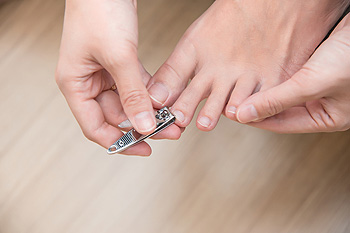 The feet are considered to be the foundation of the body. It is important to take care of them in the best way possible. There are daily routines that can be implemented which can help the feet, and positively affect the overall health of the body. These can include washing and drying the feet thoroughly, followed by using a moisturizer. This aids in keeping the skin soft, and may prevent unwanted foot conditions from developing. Additionally, it is beneficial to wear shoes that fit properly. These can consist of choosing shoes that have adequate room for the toes to move freely in, and ensuring the shoes are constructed with breathable materials. It may be helpful to avoid wearing high heels, or to wear them for limited periods of time, which may help to prevent hammertoe and bunions from developing. Research has indicated the importance of trimming the toenails correctly, as this is known to play a significant role in preventing ingrown toenails from developing. If you would like additional information about how to properly take care of your feet, please consult with a podiatrist.
The feet are considered to be the foundation of the body. It is important to take care of them in the best way possible. There are daily routines that can be implemented which can help the feet, and positively affect the overall health of the body. These can include washing and drying the feet thoroughly, followed by using a moisturizer. This aids in keeping the skin soft, and may prevent unwanted foot conditions from developing. Additionally, it is beneficial to wear shoes that fit properly. These can consist of choosing shoes that have adequate room for the toes to move freely in, and ensuring the shoes are constructed with breathable materials. It may be helpful to avoid wearing high heels, or to wear them for limited periods of time, which may help to prevent hammertoe and bunions from developing. Research has indicated the importance of trimming the toenails correctly, as this is known to play a significant role in preventing ingrown toenails from developing. If you would like additional information about how to properly take care of your feet, please consult with a podiatrist.
Everyday foot care is very important to prevent infection and other foot ailments. If you need your feet checked, contact Dr. Howard Horowitz from Bowie Foot & Ankle . Our doctor can provide the care you need to keep you pain-free and on your feet.
Everyday Foot Care
Often, people take care of their bodies, face and hair more so than they do for their feet. But the feet are a very important aspect of our bodies, and one that we should pay more attention to. Without our feet, we would not be able to perform most daily tasks.
It is best to check your feet regularly to make sure there are no new bruises or cuts that you may not have noticed before. For dry feet, moisturizer can easily be a remedy and can be applied as often as necessary to the affected areas. Wearing shoes that fit well can also help you maintain good foot health, as well as making it easier to walk and do daily activities without the stress or pain of ill-fitting shoes, high heels, or even flip flops. Wearing clean socks with closed shoes is important to ensure that sweat and bacteria do not accumulate within the shoe. Clean socks help to prevent Athlete’s foot, fungi problems, bad odors, and can absorb sweat.
If you have any questions please feel free to contact our office located in Bowie, MD . We offer the newest diagnostic and treatment technologies for all your foot and ankle needs.
Every Day Foot Care
Our feet are important in our everyday lives. The problem is that we tend to neglect them. When this becomes a habit, it can cause significant trouble. Ignoring foot problems can mean pain, limited mobility, and expensive doctor's visits. On the other hand, if feet are cared for and looked after regularly, they will perform without pain or complication.
Routine hygiene is the most basic way to care for the feet. Wash and dry them thoroughly daily. Remember to get between the toes and keep the toenails trimmed and short. If the feet feel dry or there are signs of dryness or cracking, use a moisturizer designed for the feet.
When using moisturizer on the feet, try to avoid applying between the toes. If cream or lotion sits too long, they can cause fungal and bacterial growth. When moisturizer is used between the toes, it can also cause the skin to soften too much.
Shoes are also an important aspect of foot care. When one is picking out shoes, make sure they are the correct size. Shoes need to be snug, but not too tight. On the other hand, if shoes are too loose they can cause foot problems as well. It is highly recommended that shopping for new shoes be done later in the day. The reason for this is that the feet will have settled and swelled to their full size by then. To keep your feet at their most healthy, avoid wearing high heels or flip flops too often. Instead, choose shoes that are good for your feet. Good shoes pad the soles of your feet and support the arches and ankles.
Socks should also be worn daily with closed-toe shoes. They may feel hot during the summer months, but they absorb sweat and moisture off the feet. Without socks, the build-up of sweat in a closed-toe shoe can cause fungal problems and athlete's foot.
The best thing to remember in every day foot care is that shoes do make a difference. If you spend a lot of time on your feet, make sure that your shoes show no signs of wear. Shoes should offer ample support for the arches and the overall foot. Additionally, try to make foot cleaning and maintenance a daily habit. If you keep these things in mind, your feet will stay healthy and safe.
How Is A Broken Toe Treated?
 A broken toe is generally caused by a heavy object falling on it, or if you stub your toe against a heavy piece of furniture. One of the symptoms that may be experienced is immediate pain and discomfort, followed by possible bruising and swelling. Additionally, it may be difficult to move or bend the affected toe, and in severe fractures, the toe may be bent at an abnormal angle. After a proper diagnosis is performed, which typically consists of having an X-ray taken, correct treatment can begin. This can include taping the broken toe to an adjacent toe, which is referred to as buddy taping. This procedure can be helpful in providing adequate support as the healing process occurs. In severe fractures, it may be helpful to wear a boot that can ensure limited mobility as the toe heals. If you have broken your toe, it is strongly advised that you consult with a podiatrist who can begin the correct treatment technique that is right for you.
A broken toe is generally caused by a heavy object falling on it, or if you stub your toe against a heavy piece of furniture. One of the symptoms that may be experienced is immediate pain and discomfort, followed by possible bruising and swelling. Additionally, it may be difficult to move or bend the affected toe, and in severe fractures, the toe may be bent at an abnormal angle. After a proper diagnosis is performed, which typically consists of having an X-ray taken, correct treatment can begin. This can include taping the broken toe to an adjacent toe, which is referred to as buddy taping. This procedure can be helpful in providing adequate support as the healing process occurs. In severe fractures, it may be helpful to wear a boot that can ensure limited mobility as the toe heals. If you have broken your toe, it is strongly advised that you consult with a podiatrist who can begin the correct treatment technique that is right for you.
Broken toes may cause a lot of pain and should be treated as soon as possible. If you have any concerns about your feet, contact Dr. Howard Horowitz from Bowie Foot & Ankle . Our doctor will treat your foot and ankle needs.
What Is a Broken Toe?
A broken toe occurs when one or more of the toe bones of the foot are broken after an injury. Injuries such as stubbing your toe or dropping a heavy object on it may cause a toe fracture.
Symptoms of a Broken Toe
- Swelling
- Pain (with/without wearing shoes)
- Stiffness
- Nail Injury
Although the injured toe should be monitored daily, it is especially important to have a podiatrist look at your toe if you have severe symptoms. Some of these symptoms include worsening or new pain that is not relieved with medication, sores, redness, or open wounds near the toe.
If you have any questions, please feel free to contact our office located in Bowie, MD . We offer the newest diagnostic and treatment technologies for all your foot care needs.
Why Does Plantar Fasciitis Occur?
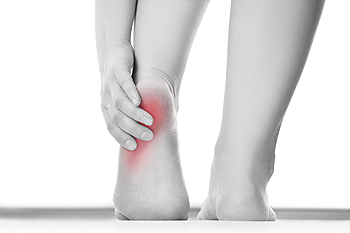 A common foot condition that affects numerous patients is referred to as plantar fasciitis. This occurs when the tissue that is located on the bottom of the foot becomes inflamed. This condition focuses on the plantar fascia, which connects the toes to the heels. The arch is supported by this band of tissue, and can be affected as this condition progresses. There are common reasons why plantar fasciitis may gradually develop. These can consist of standing for the majority of the day, existing foot conditions that may include having a rigid Achilles tendon, and wearing shoes that do not fit correctly. Patients may find moderate relief when the affected foot is elevated. It may also be beneficial to perform exercises that can strengthen the overall foot. Additionally, it may help to tape the foot which can provide support. If you feel you have this ailment, it is suggested that you schedule a consultation with a podiatrist who can help you to manage this condition.
A common foot condition that affects numerous patients is referred to as plantar fasciitis. This occurs when the tissue that is located on the bottom of the foot becomes inflamed. This condition focuses on the plantar fascia, which connects the toes to the heels. The arch is supported by this band of tissue, and can be affected as this condition progresses. There are common reasons why plantar fasciitis may gradually develop. These can consist of standing for the majority of the day, existing foot conditions that may include having a rigid Achilles tendon, and wearing shoes that do not fit correctly. Patients may find moderate relief when the affected foot is elevated. It may also be beneficial to perform exercises that can strengthen the overall foot. Additionally, it may help to tape the foot which can provide support. If you feel you have this ailment, it is suggested that you schedule a consultation with a podiatrist who can help you to manage this condition.
Plantar fasciitis can be very painful and inconvenient. If you are experiencing heel pain or symptoms of plantar fasciitis, contact Dr. Howard Horowitz from Bowie Foot & Ankle . Our doctor can provide the care you need to keep you pain-free and on your feet.
What Is Plantar Fasciitis?
Plantar fasciitis is the inflammation of the thick band of tissue that runs along the bottom of your foot, known as the plantar fascia, and causes mild to severe heel pain.
What Causes Plantar Fasciitis?
- Excessive running
- Non-supportive shoes
- Overpronation
- Repeated stretching and tearing of the plantar fascia
How Can It Be Treated?
- Conservative measures – anti-inflammatories, ice packs, stretching exercises, physical therapy, orthotic devices
- Shockwave therapy – sound waves are sent to the affected area to facilitate healing and are usually used for chronic cases of plantar fasciitis
- Surgery – usually only used as a last resort when all else fails. The plantar fascia can be surgically detached from the heel
While very treatable, plantar fasciitis is definitely not something that should be ignored. Especially in severe cases, speaking to your doctor right away is highly recommended to avoid complications and severe heel pain. Your podiatrist can work with you to provide the appropriate treatment options tailored to your condition.
If you have any questions please feel free to contact our office located in Bowie, MD . We offer the newest diagnostic and treatment technologies for all your foot and ankle needs.
Common Reasons a Hammertoe May Develop
 Hammertoes, as its name suggests, may cause the affected toe to bend downward, resembling a hammer-like shape. Typically, this condition can affect the second, third, or fourth toes. Because hammertoes can be painful and cause a great deal of discomfort, it’s important that you seek professional help if you notice your toe’s appearance has become deformed. Common causes for a hammertoe’s development include a muscle imbalance, tightly-fitted footwear, a previous injury, and certain diseases such as arthritis or diabetes. Along with the noticeable change of appearance of the affected toe, some may also experience swelling, redness, a burning sensation, and the development of corns or calluses on the top of the middle joint of the affected toe. For more advice on how to treat a hammertoe, please seek the professional guidance of a podiatrist.
Hammertoes, as its name suggests, may cause the affected toe to bend downward, resembling a hammer-like shape. Typically, this condition can affect the second, third, or fourth toes. Because hammertoes can be painful and cause a great deal of discomfort, it’s important that you seek professional help if you notice your toe’s appearance has become deformed. Common causes for a hammertoe’s development include a muscle imbalance, tightly-fitted footwear, a previous injury, and certain diseases such as arthritis or diabetes. Along with the noticeable change of appearance of the affected toe, some may also experience swelling, redness, a burning sensation, and the development of corns or calluses on the top of the middle joint of the affected toe. For more advice on how to treat a hammertoe, please seek the professional guidance of a podiatrist.
Hammertoe
Hammertoes can be a painful condition to live with. For more information, contact Dr. Howard Horowitz from Bowie Foot & Ankle . Our doctor will answer any of your foot- and ankle-related questions.
Hammertoe is a foot deformity that affects the joints of the second, third, fourth, or fifth toes of your feet. It is a painful foot condition in which these toes curl and arch up, which can often lead to pain when wearing footwear.
Symptoms
- Pain in the affected toes
- Development of corns or calluses due to friction
- Inflammation
- Redness
- Contracture of the toes
Causes
Genetics – People who are genetically predisposed to hammertoe are often more susceptible
Arthritis – Because arthritis affects the joints in your toes, further deformities stemming from arthritis can occur
Trauma – Direct trauma to the toes could potentially lead to hammertoe
Ill-fitting shoes – Undue pressure on the front of the toes from ill-fitting shoes can potentially lead to the development of hammertoe
Treatment
Orthotics – Custom made inserts can be used to help relieve pressure placed on the toes and therefore relieve some of the pain associated with it
Medications – Oral medications such as anti-inflammatories or NSAIDs could be used to treat the pain and inflammation hammertoes causes. Injections of corticosteroids are also sometimes used
Surgery – In more severe cases where the hammertoes have become more rigid, foot surgery is a potential option
If you have any questions please contact our office located in Bowie, MD . We offer the newest diagnostic and treatment technologies for all your foot and ankle needs.
What Causes a Tailor’s Bunion?
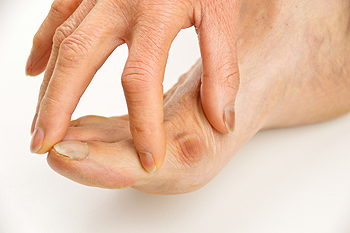 A tailor’s bunion, also known as a bunionette, is similar to a regular bunion. However, a tailor’s bunion forms on the fifth metatarsal bone at the base of the little toe, also known as the pinky toe, as opposed to the big toe. In some cases, tailor’s bunions can be caused by an inherited mechanical structure that results in the enlargement of the bone and causes the bone to move outward while the toe moves inward. In other cases, bone spurs that form on the toe can also appear as a tailor’s bunion. Shoes that are too narrow in the toe can not only lead to new tailor’s bunions, but they can aggravate existing ones as well. If you are dealing with pain from a tailor’s bunion, it is important to consult with a podiatrist for a proper diagnosis and treatment plan.
A tailor’s bunion, also known as a bunionette, is similar to a regular bunion. However, a tailor’s bunion forms on the fifth metatarsal bone at the base of the little toe, also known as the pinky toe, as opposed to the big toe. In some cases, tailor’s bunions can be caused by an inherited mechanical structure that results in the enlargement of the bone and causes the bone to move outward while the toe moves inward. In other cases, bone spurs that form on the toe can also appear as a tailor’s bunion. Shoes that are too narrow in the toe can not only lead to new tailor’s bunions, but they can aggravate existing ones as well. If you are dealing with pain from a tailor’s bunion, it is important to consult with a podiatrist for a proper diagnosis and treatment plan.
If you are suffering from bunion pain, contact Dr. Howard Horowitz of Bowie Foot & Ankle . Our doctor can provide the care you need to keep you pain-free and on your feet.
What Is a Bunion?
Bunions are painful bony bumps that usually develop on the inside of the foot at the joint of the big toe. As the deformity increases over time, it may become painful to walk and wear shoes. Women are more likely to exacerbate existing bunions since they often wear tight, narrow shoes that shift their toes together. Bunion pain can be relieved by wearing wider shoes with enough room for the toes.
Causes
- Genetics – some people inherit feet that are more prone to bunion development
- Inflammatory Conditions - rheumatoid arthritis and polio may cause bunion development
Symptoms
- Redness and inflammation
- Pain and tenderness
- Callus or corns on the bump
- Restricted motion in the big toe
In order to diagnose your bunion, your podiatrist may ask about your medical history, symptoms, and general health. Your doctor might also order an x-ray to take a closer look at your feet. Nonsurgical treatment options include orthotics, padding, icing, changes in footwear, and medication. If nonsurgical treatments don’t alleviate your bunion pain, surgery may be necessary.
If you have any questions, please feel free to contact our office located in Bowie, MD . We offer the newest diagnostic and treatment technologies for all your foot care needs.
Runners And Blisters On The Feet
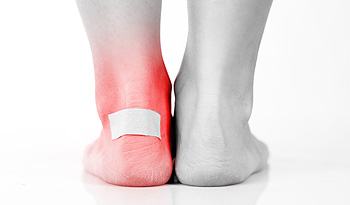 People who enjoy running can experience blisters. It is the body’s method of protecting skin that has become damaged from excessive friction. It appears as a bubble that is filled with liquid which forms over the raw skin, and it will gradually drain as new skin develops. It is beneficial to wear a protective covering over the blister while running, and this may help to prevent the blister from popping or draining prematurely. Common symptoms of an infected blister can consist of swelling, redness, and there may be a yellowish fluid that comes from the blister. Effective preventive methods can include wearing shoes and socks that fit correctly, and it may help to improve balance which can affect stability. If you would like additional information about blisters on the feet, please confer with a podiatrist.
People who enjoy running can experience blisters. It is the body’s method of protecting skin that has become damaged from excessive friction. It appears as a bubble that is filled with liquid which forms over the raw skin, and it will gradually drain as new skin develops. It is beneficial to wear a protective covering over the blister while running, and this may help to prevent the blister from popping or draining prematurely. Common symptoms of an infected blister can consist of swelling, redness, and there may be a yellowish fluid that comes from the blister. Effective preventive methods can include wearing shoes and socks that fit correctly, and it may help to improve balance which can affect stability. If you would like additional information about blisters on the feet, please confer with a podiatrist.
Blisters are prone to making everyday activities extremely uncomfortable. If your feet are hurting, contact Dr. Howard Horowitz of Bowie Foot & Ankle . Our doctor can provide the care you need to keep you pain-free and on your feet.
Foot Blisters
Foot blisters develop as a result of constantly wearing tight or ill-fitting footwear. This happens due to the constant rubbing from the shoe, which can often lead to pain.
What Are Foot Blisters?
A foot blister is a small fluid-filled pocket that forms on the upper-most layer of the skin. Blisters are filled with clear fluid and can lead to blood drainage or pus if the area becomes infected.
How Do Blisters Form?
Blisters on the feet are often the result of constant friction of skin and material, usually by shoe rubbing. Walking in sandals, boots, or shoes that don’t fit properly for long periods of time can result in a blister. Having consistent foot moisture and humidity can easily lead to blister formation.
Prevention & Treatment
It is important to properly care for the affected area in order to prevent infection and ease the pain. Do not lance the blister and use a Band-Aid to provide pain relief. Also, be sure to keep your feet dry and wear proper fitting shoes. If you see blood or pus in a blister, seek assistance from a podiatrist.
If you have any questions, please feel free to contact our office located in Bowie, MD . We offer the newest diagnostic and treatment technologies for all your foot care needs.

